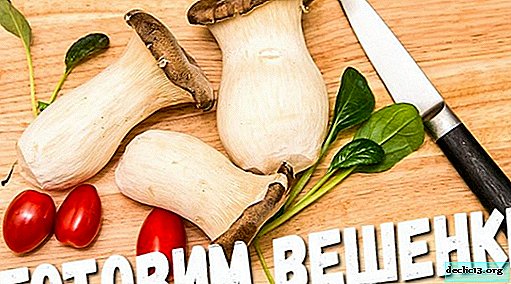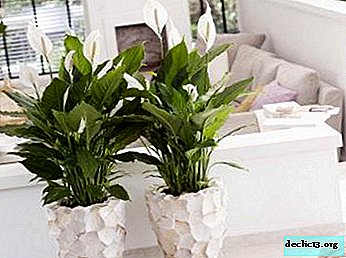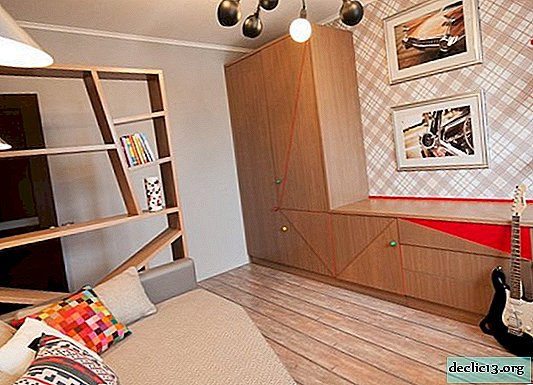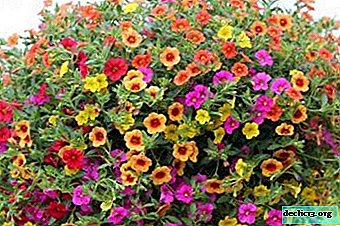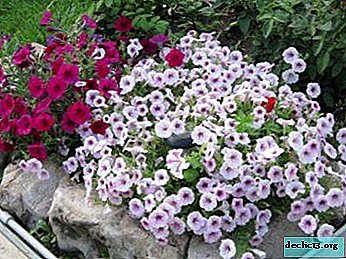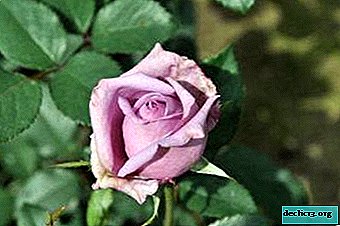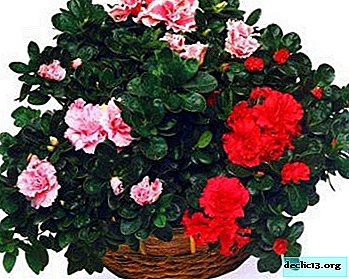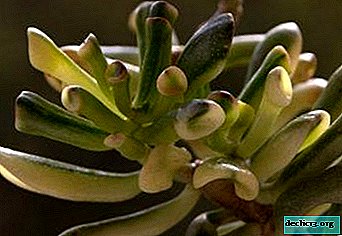The extraordinary beauty of lobelia: photos and features of the flower, the rules of growing
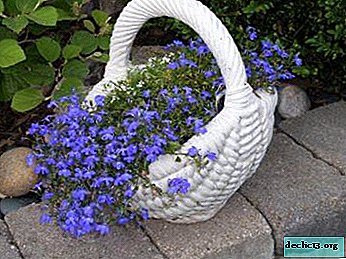 Lush rugs scattered among the greenery delight the eye and give the garden a sophisticated charm.
Lush rugs scattered among the greenery delight the eye and give the garden a sophisticated charm.
From the first summer days to autumn frosts, the lobelia is completely covered with miniature flowers of delicate shades: blue, pink, sky blue, violet, purple.
You always want to decorate your summer cottage or balcony with beautiful flowers, and often this plant becomes an attractive, plentifully flowering and completely unpretentious lobelia, similar to a fluffy flowering ball.
Description
So what is this plant? Lobelia (Latin: Lobelia) is a creeping plant with a characteristic appearance: a half-meter hanging stalk of a reddish hue and a cascade of small - sometimes double - inflorescences with a wide range of colors: from white and beige to pink and purple.
Lobelia, numbering about 300 species, was named after the Dutch botanist Matthias de L'Obel, the head of the Royal Botanic Garden, Jacob I.An unusually beautiful plant originates from North America and at the same time can live almost everywhere, even in the temperate climate of Russia.
Not only can Lobelia pretend to be a garden path border in a summer house or a flower ball in a hanging basket, it can also perfectly decorate an interior on a balcony or window sill (you can find out what varieties of lobelia can be planted in open ground here). Despite the fact that lobelia can be grown both as an annual and as a perennial, in our latitudes this plant is still more often used as an annual.
Sometimes many people confuse lobelia with a blooming cactus lobivia (lobivia), but still the latter refers to succulents, while the former refers to bell-shaped ones.
The plant is used as a decoction to combat nicotine addiction. Sometimes for the same purpose dry crushed leaves and stalks of lobelia are used.
You can learn about the types, secrets of care and cultivation of lobelia perennial, as well as see photos of this beautiful flower, here.
Photo
The following are photos of lobelia:

And a photo of how the lobivia cactus looks with which this plant is confused:

Growing
Almost all plant varieties, propagated either by seeds or cuttings, bloom in about two to three months after germination. A long and lush flowering (up to frost) will provide regular removal of dried inflorescences.
Seeds
When growing lobelia flowers from seeds, you must strictly monitor soil moisture. In case of excessive watering, a whitish mold may appear on the leaves, and from insufficient moisture of the foliage it may curl up and dry.
You should also pay special attention to the soil: for seedlings, fertile, but loose soil without humus is most suitable.Cuttings
Terry varieties propagated by cuttings. In this case, cuttings are cut from the uterine bush of the previous season, which was wintered at home or in the greenhouse - that is, in the heat. In summer, cuttings are planted on beds immediately in pots to exclude infertile shoots that can close flower-bearing ones with their large amount.
When to sow seedlings?
Lobelia seedlings develop long enough, so the seeds are sown in February-March, seedlings of which appear after about ten to twelve days. Despite careful and accurate care, the shoots can grow poorly and suffer from a black leg due to short daylight hours in the early spring.
We suggest watching a video on how to properly sow lobelia seeds:
Outdoor landing
In open ground seedlings need to be planted only with the arrival of sustainable heatwhen the threat of cold is excluded, because the plant prefers warmth and is very afraid of frosts - by this moment, as a rule, there are already first flowers. And although lobelia is generally unpretentious, tolerates drought and does not require additional nutrition, it is still better to choose an open and sunny place for planting, or a slightly shaded area.
Read about what varieties of lobelia are best suited for planting in the open ground, as well as about the rules for caring for the plant, read in our material.
Can I grow with other plants in the flowerbed?
Lobelia can be grown both in splendid isolation and in a company with decorative foliage plants such as cloves, verbena or petunia. Composing floral combinations for lobelia, it is worth stopping your choice on the same moisture-loving and low plants.
Care
Having knowledge of the difficult and complex nature of lobelia can prevent many mistakes related to the content of this unusual plant: a flowering plant requires a lot of light, regular watering and top dressing.- Good lighting - a bright and sunny place, but not heat, from which yellow and dry leaves easily appear, and not a semi-dark place in which the plant will bloom poorly.
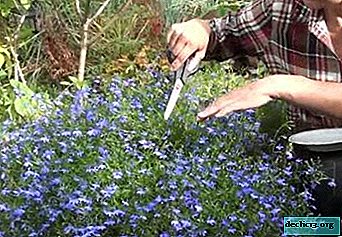 Watering - regular so that the soil would always be slightly moist, but without stagnation of water at the roots, that is, good with a drainage system; in case of drought, lobelia will not bloom.
Watering - regular so that the soil would always be slightly moist, but without stagnation of water at the roots, that is, good with a drainage system; in case of drought, lobelia will not bloom.- Priming - Must be rich in organic matter or nitrogen fertilizers, or land mixed with sand.
- Top dressing - Regular, but not frequent, the plant likes top dressing with a minimum of nitrogen or potassium sulfate during flowering.
- Stalk pruning - necessary at the end of flowering for the active growth of new shoots along with fertilizing fertilizers.
About the features of lobelia care, as well as how to plant and grow a flower, read in our material.
The plant is poisonous to children and pets. To grow lobelia, you do not need special skills or knowledge. It is only necessary to observe the rules of sowing and caring for plants. Beautiful, graceful and charming lobelia flowers will splendidly decorate a summer house or balcony.

 Watering - regular so that the soil would always be slightly moist, but without stagnation of water at the roots, that is, good with a drainage system; in case of drought, lobelia will not bloom.
Watering - regular so that the soil would always be slightly moist, but without stagnation of water at the roots, that is, good with a drainage system; in case of drought, lobelia will not bloom.